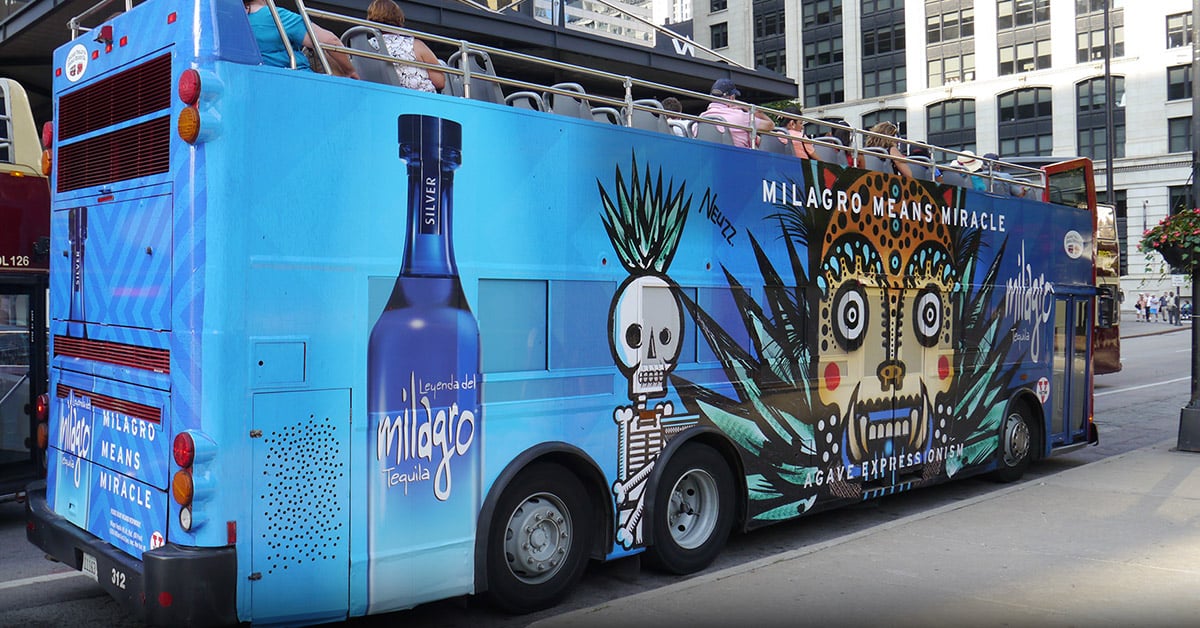Out-of-Home(OOH) advertising can be a great way to reach 21+ audiences while they are out and about experiencing a city's nightlife. Alcohol brands seek to entertain and entice audiences. Their beverages and branding evoke a particular lifestyle and experience.
Outdoor advertising allows audiences to view your brand's ads in popular retail and restaurant areas. They can buy your alcohol brand immediately after seeing an ad, whether through a venue, a bar, a retail destination, or a liquor store.
But, Alcohol advertising comes with challenges. Some markets have strict rules and regulations on where they allow alcohol advertisements. How can advertisers navigate these challenges while still reaching their target audience?
In this article, you will learn outdoor advertising best practices for alcohol advertisers.
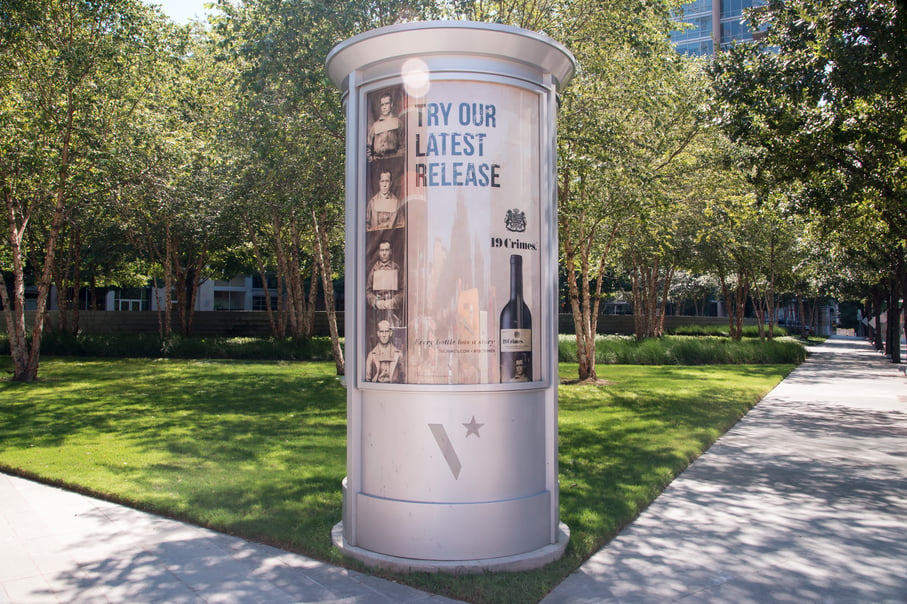
Common Alcohol Advertising Objectives
Strategies vary by brand and their specific target audiences. But what alcohol brands have in common is that they are trying to reach adult audiences and get them to consume their goods. In the United States, the drinking age is 21+ so this is often the target.
The goal is to get people buying and drinking your product while out. You might target certain bars that sell your brand or specific retailers like liquor stores and grocery stores that sell the product.
Here are the most common strategies and circumstances for alcohol advertising:
- Nightlife and Downtown: One of the most common strategies is to target nightlife areas with many restaurants and bars. Although these areas may still reach some 18+ audiences, most bars and clubs only accept those over 21.
- Liquor and Grocery Stores: Places that sell alcohol for home use offer just-in-time advertising opportunities. They allow audiences to see your advertisement and immediately act upon its CTA.
- Events: Sporting events, or other events, are opportunities for alcohol advertisers. They reach audiences while they are out having fun and celebrating.
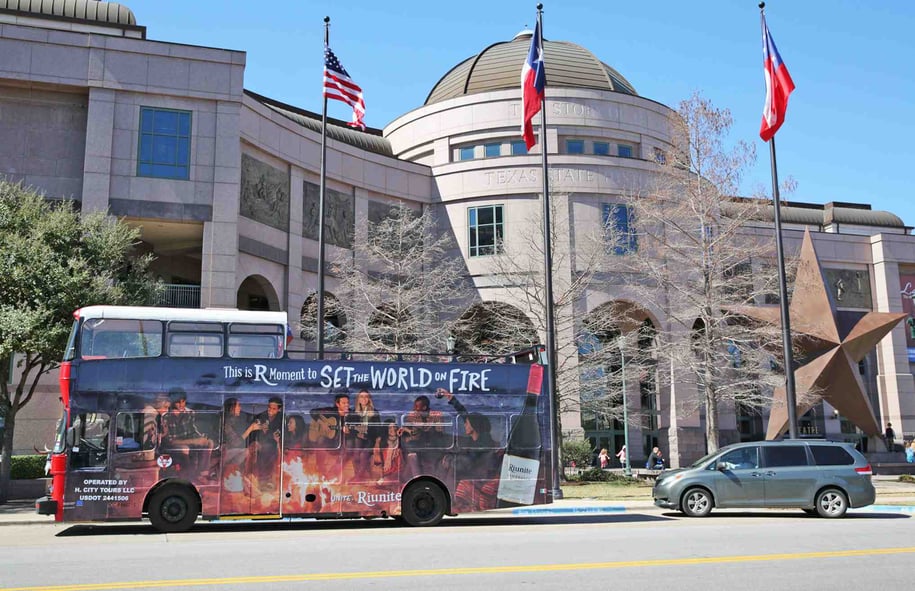
Most Common Formats for Alcohol Advertising
There are many formats that advertisers use for alcohol advertising. Alcohol advertisers typically make use of high-impact formats such as Bulletins (Billboards) or Wallscapes. But there are a variety of formats that can be used, depending on the market's restrictions:
- Billboards: Billboards are one of the most common formats for alcohol advertisers. Both static and digital Billboard options are popular. Many alcohol advertisers may run their various flavors on digital boards or opt to do extensions on their static boards. For example, brands can add embellishments to the Billboard that match the shape of the brand’s bottle. This helps the ad stand out against traditional Billboards. It also clearly shows the ad as a beverage brand. Billboard alcohol advertisers often have a goal of high frequency and want the audience to see these ads as much as possible.
- Posters: Posters often supplement a campaign with higher-impact formats like Billboards or Wallscapes. They can boost a campaign's reach and frequency when placed on arterials near bars and liquor stores.
- Transit: Alcohol advertisers may be interested in Transit ads, but some markets are very restrictive or may ban alcohol advertising altogether. Moving formats are often restricted in most markets or may have a strict ABV % policy. In those markets, you may be able to advertise on street furniture such as Bus Shelters and Bus Benches. An OOH specialist can help you understand your market's format and placement restrictions.
- Nontraditional OOH: There are also non-traditional options such as Mobile Billboards and experiential campaigns. Knowing this and that OOH can be anything found outside the home, you may think - what about having a tasting? We recommend you navigate this journey with an OOH specialist due to placement restrictions and the need to card / get proper licenses.
- Place-Based Advertising: Liquor stores, grocery stores, bars and other place-based advertising venues may also allow alcohol advertising. It depends on the product and venue. Types of alcohol advertising allowed can vary significantly from state to state and even from city to city. You may also target specific events like football or baseball games. Keep in mind that when advertising in stadiums, the brand must typically be sold there based on sponsorships.
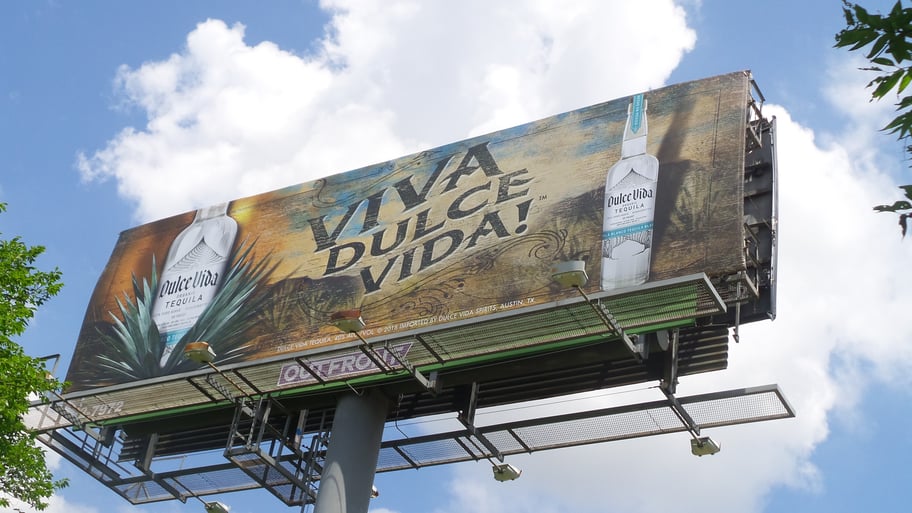
How Does Alcohol Advertising Follow the Customer Journey?
Depending on the advertiser's objectives, you have various targeting options. For example, if consumers are traveling to a specific event, the brand may consider traffic patterns in order to determine the media formats they will see along the way. If the consumer is going to a bar area, they may take a rideshare to get there which gives them the opportunity to see branded ads on rideshare tops, interior tablets, or video screens. While traveling to the area's downtown, they see Billboards and Posters. Once arriving at the bar, they see signage on bar walls, in the bathrooms, and branded coasters. This serves as an excellent reminder to purchase the brand.

Another possible customer journey is for a person who buys alcohol to consume at home. In this case, you might target commuter patterns from office areas and neighborhoods, positioning OOH near and within retailers that sell your brand.
Or you may want to target special events. In this case,you can advertise along key arterials leading to and from the venue and, depending on the market, on transit. Some alcohol brands show their commitment to drinking responsibly through sponsored free rides programs on taxis, rideshare, and transit.
The best strategies ensure that audiences see your message several times throughout their journey.
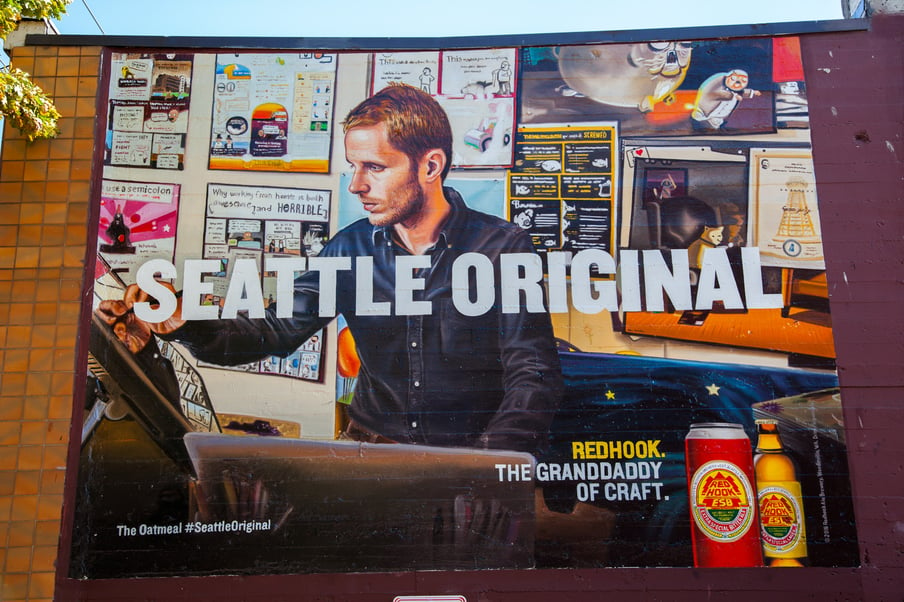
Regulations to Be Aware of In Alcohol Advertising
Alcohol is a heavily regulated industry. Where you can advertise alcohol is also heavily regulated. However, these regulations vary significantly from market to market. An OOH specialist familiar with your target markets can help you develop your advertising strategy.
Certain ordinances of minimum distances from schools and places where children may frequent are relatively stable across the board. But there are other regulations to be aware of. For example, some markets do not allow alcohol brands to advertise on transit. Other markets may require specific messaging on the advertisements. Advertisers may need to remind audiences to drink responsibly. They may need to include potential health risks associated with consuming alcohol. Sometimes, the type of alcohol advertised is also a factor. For example, in Dallas, you can run beer and wine ads on transit, but hard liquor is not allowed.
The media owner will also be aware of local laws regarding alcohol advertising and will have to approve any ad displayed on their inventory.
Keep in mind that you may run into limited inventory due to market restrictions on where alcohol ads can run plus higher demand in nightlife areas.
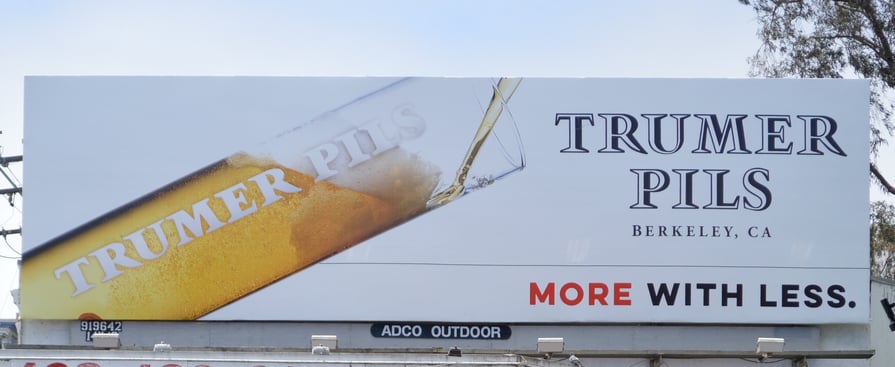
What are Common Best Practices for OOH Alcohol Advertising?
There are a variety of best practices that alcohol advertisers should follow. Here are a few of the most common:
- Plan and Buy Early: Alcohol advertisers, like many other brands, should buy their inventory in advance, especially since there are often restrictions. If you want specific areas or inventory, planning and buying in advance is highly recommended. Remember that summer and holiday seasons are the highest demand periods for OOH.
- Buy in Bulk: As in many instances, buying more inventory for longer periods allows for increased discounts.
- Do Due Diligence: Make sure you know the city ordinances. Know where you are not allowed as an alcohol advertiser.
- Know your Objectives: Know what you are trying to achieve with your advertising and the target audience. Defining this in the beginning will allow your OOH specialist to research likely behaviors and traffic patterns in order to deliver a successful campaign.
- Clear Creatives: Your OOH creative plays a significant role in ensuring your message is clear. Make sure writing is legible so audiences know what is being advertised.
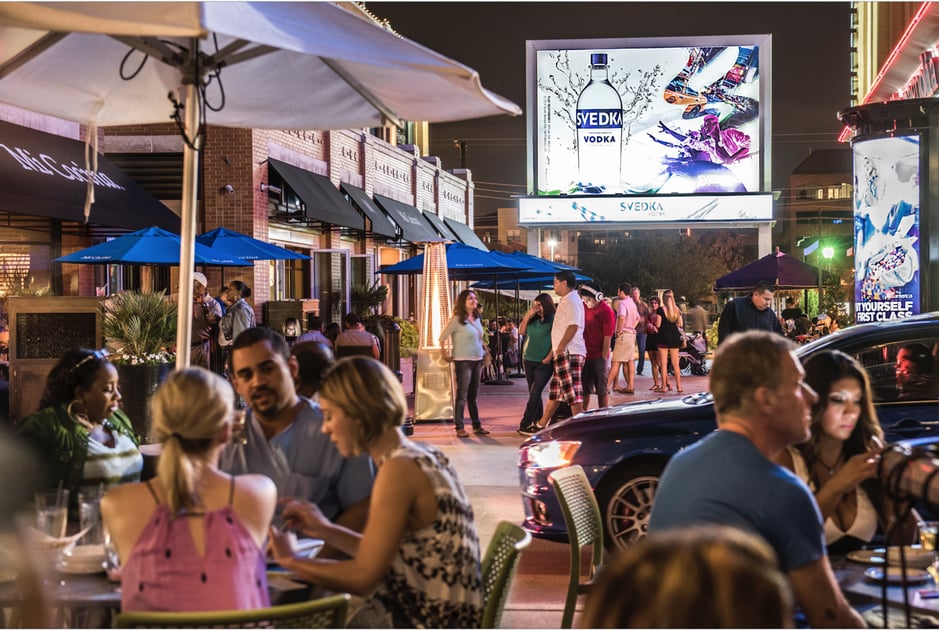
Create Intoxicating Outdoor Advertisements with Billups
At Billups, we have more than 20 years of experience helping brands to reach their audiences. We understand markets, their rules, regulations, and where your audience frequents. Let us help you put together an effective alcohol advertising campaign. We can work together to excite audiences about your brand. Contact us today to get started!
